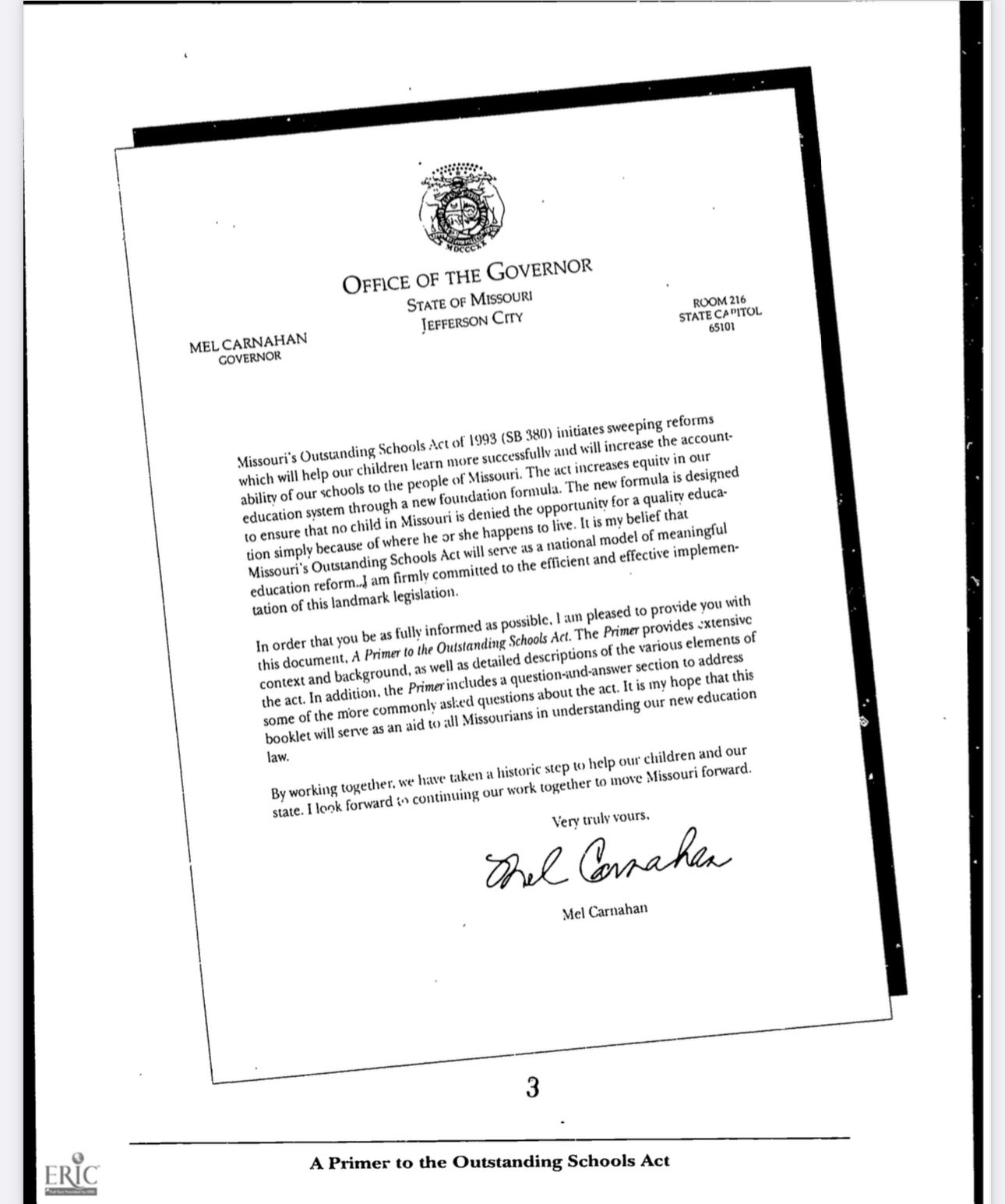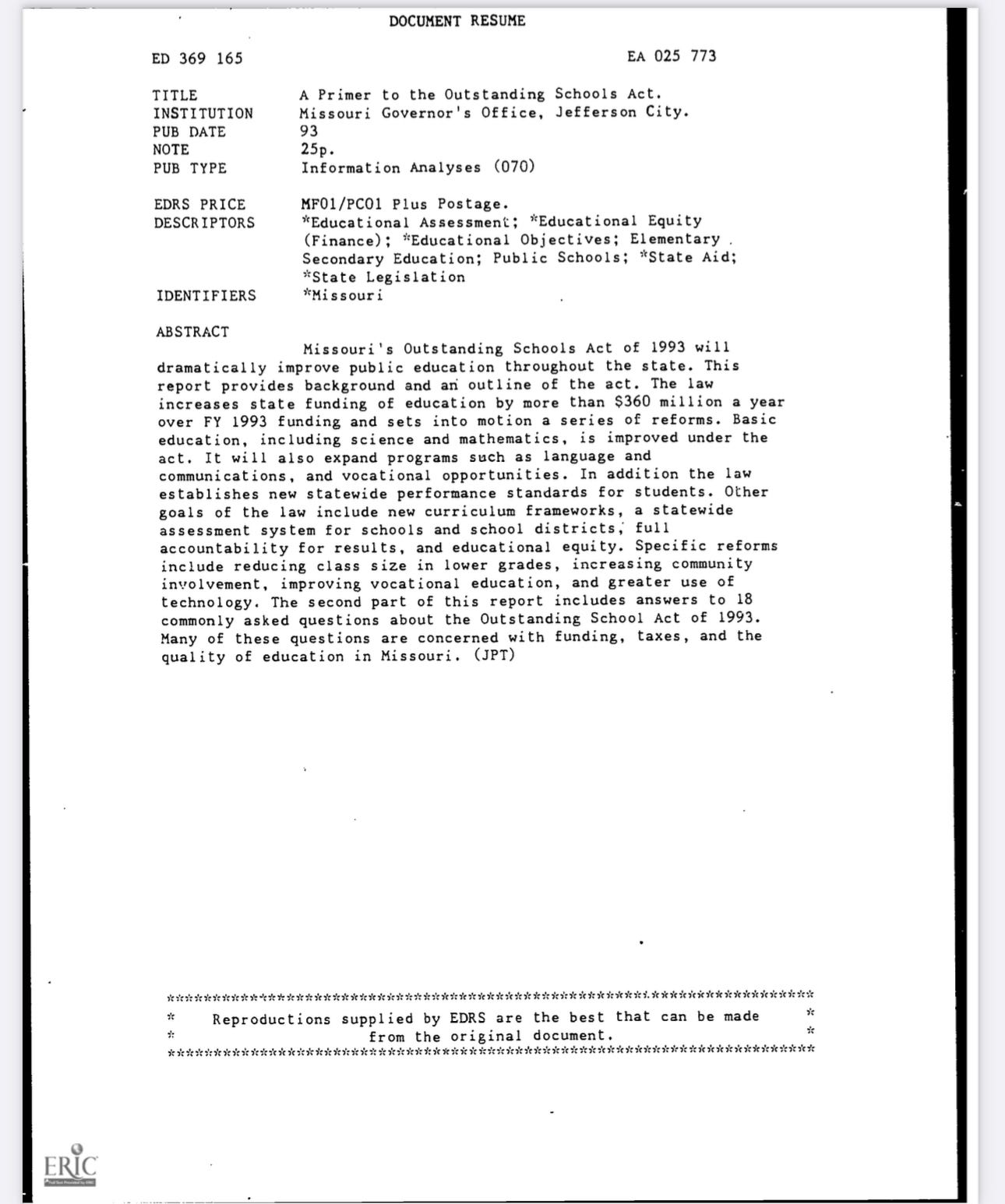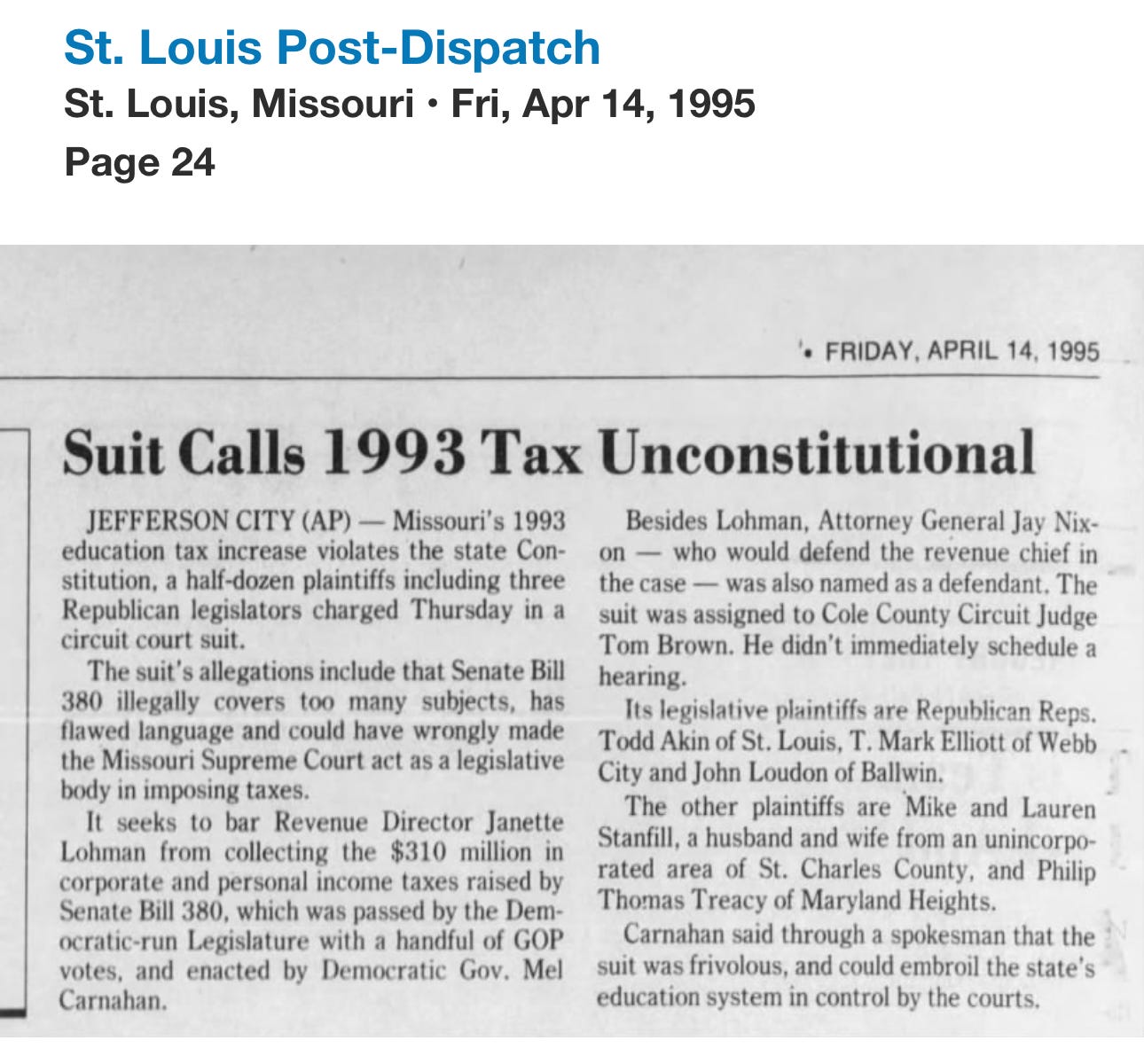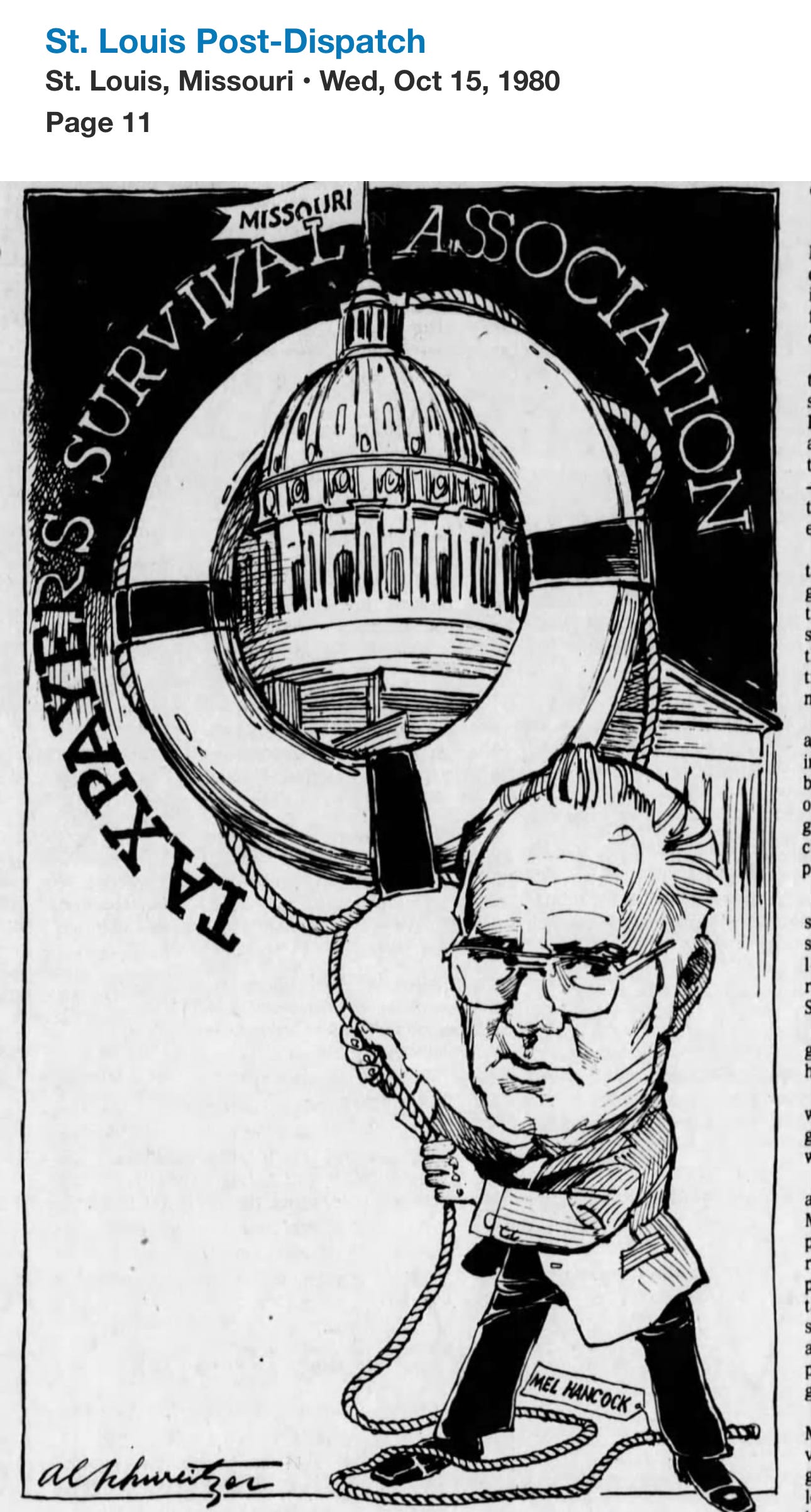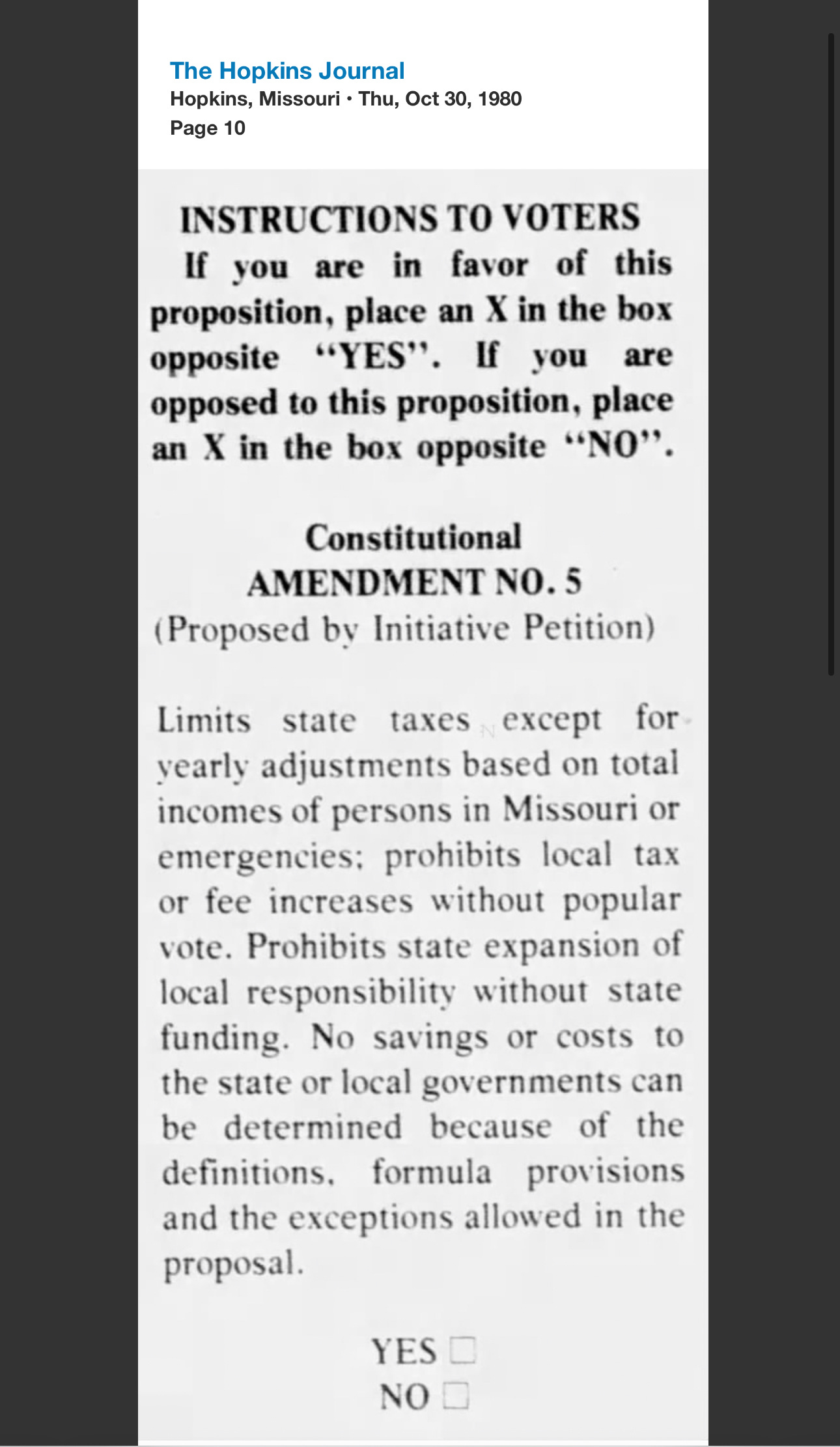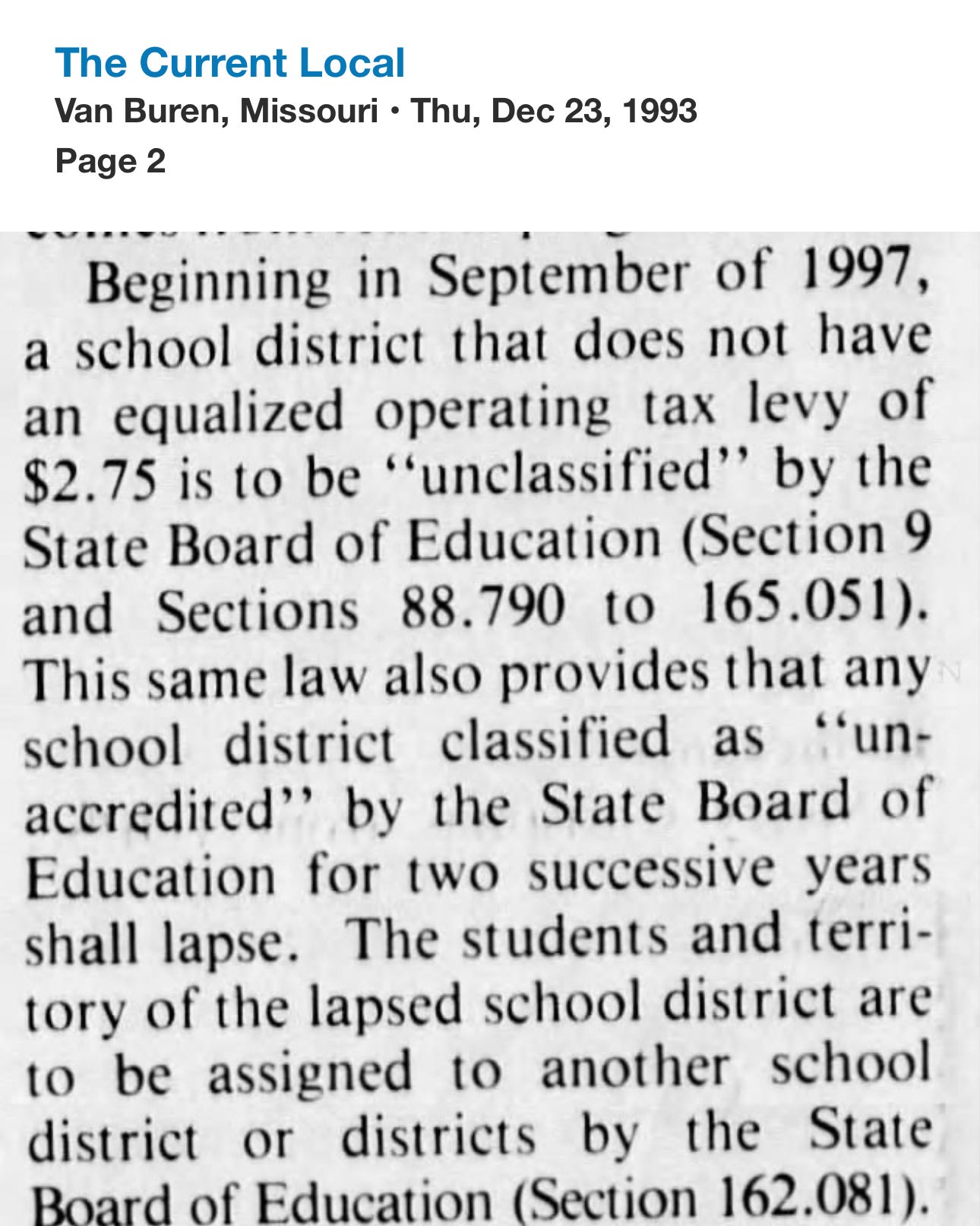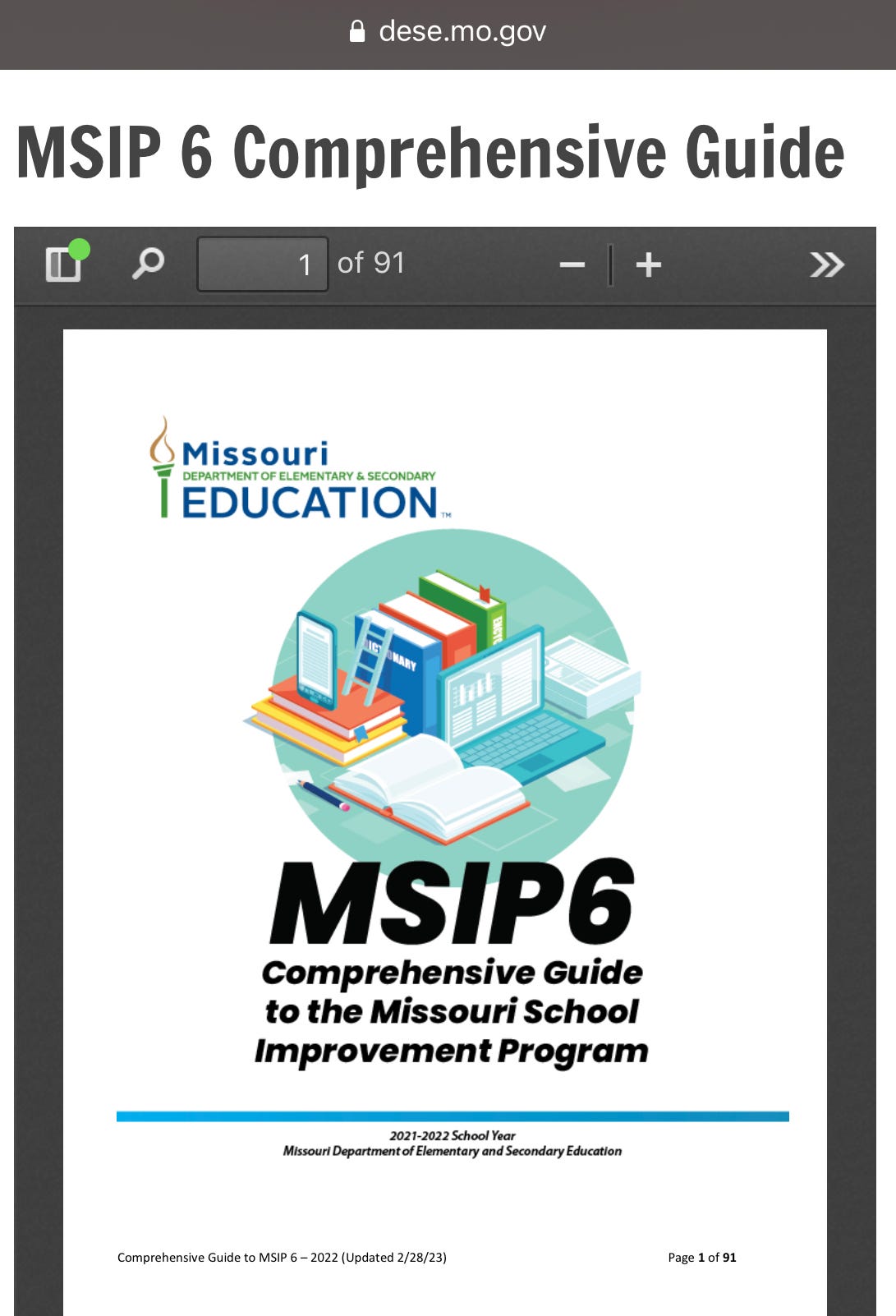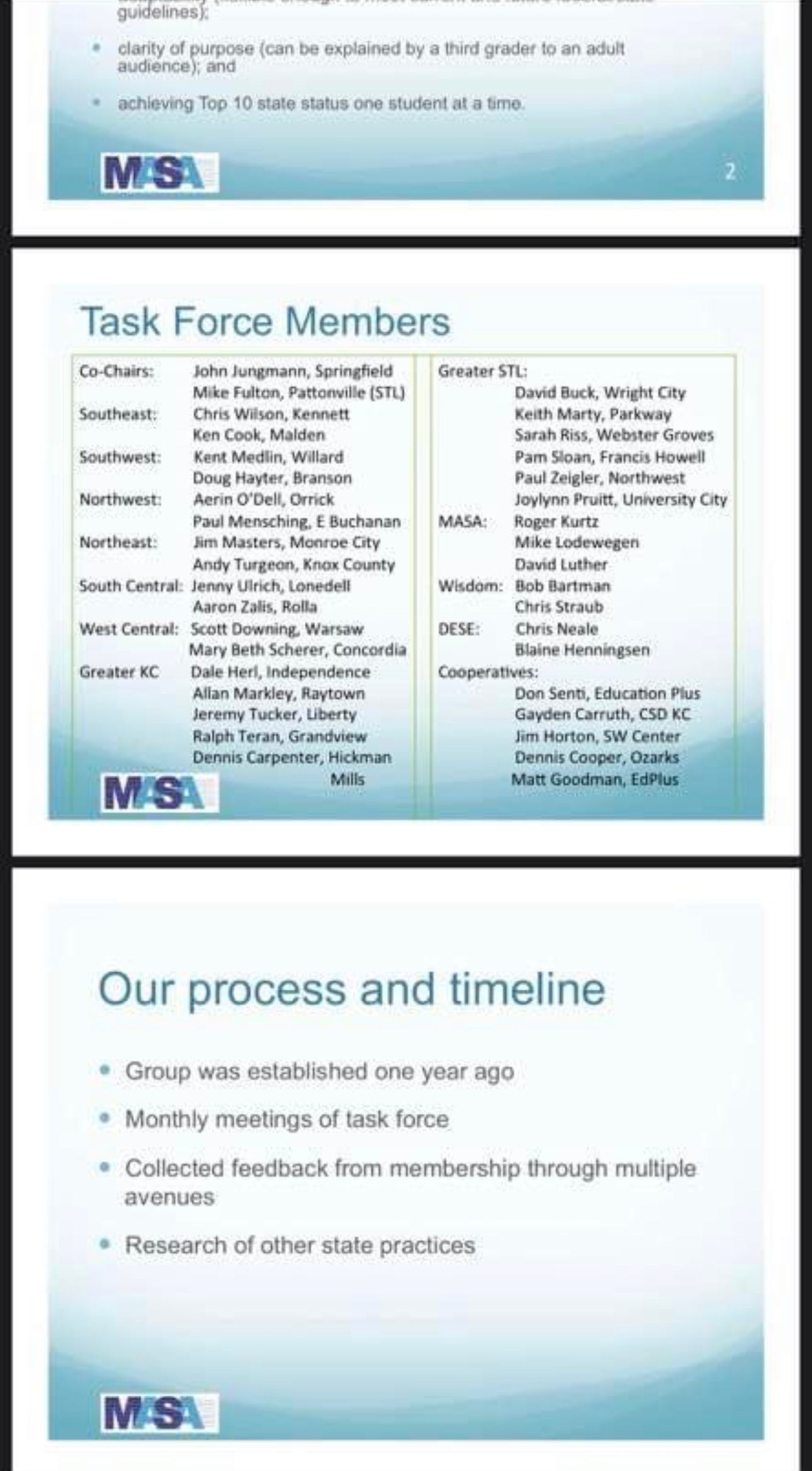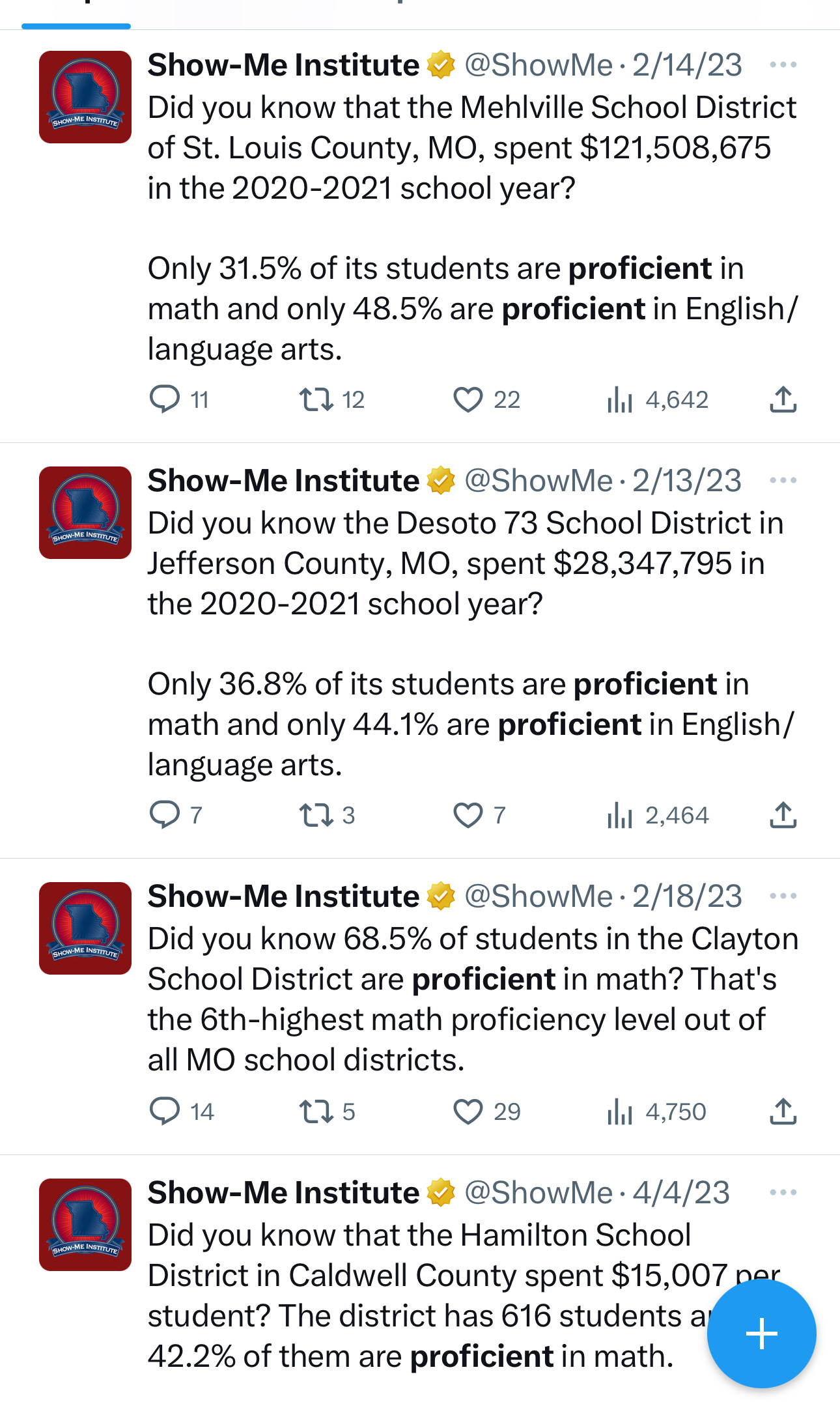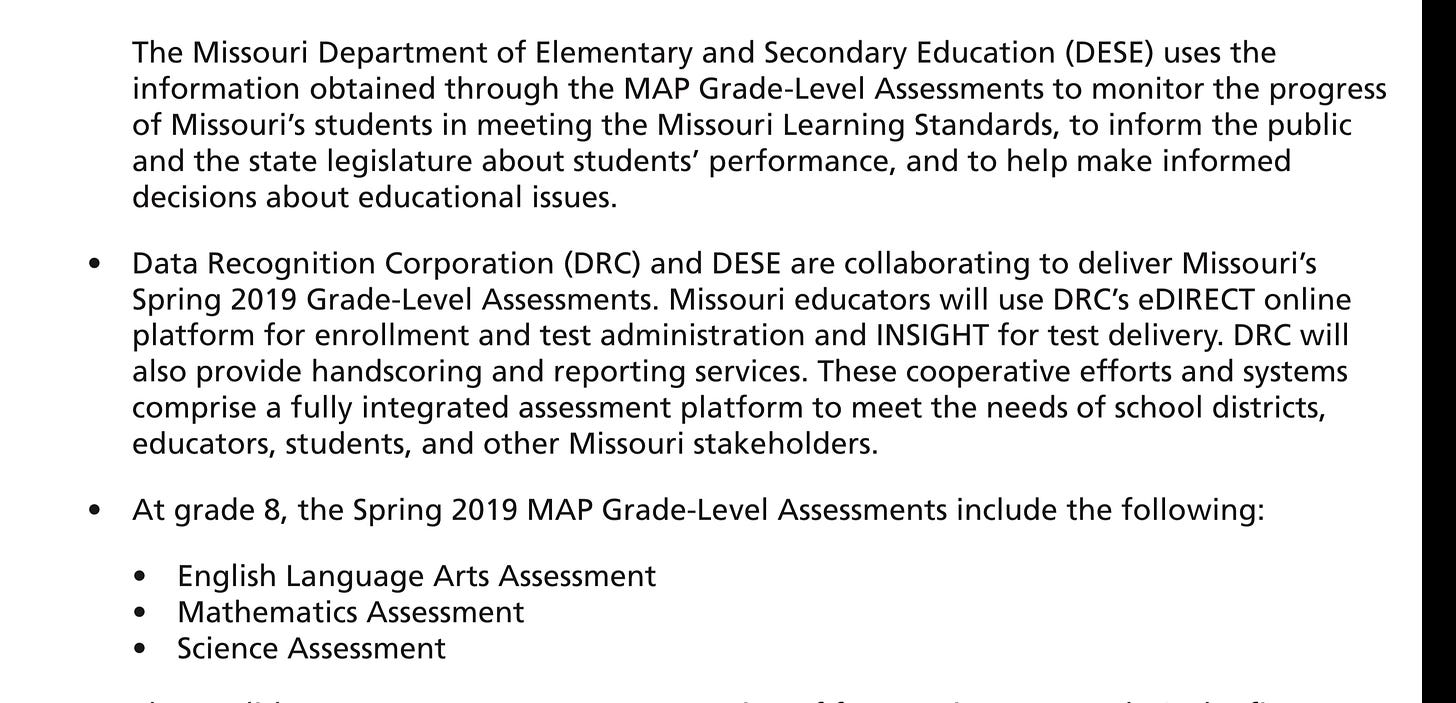MO Ed History: OSA of 1993, MSIP, & MAP
Quick History on the Missouri’s Outstanding Schools Act (OSA) of 1993, Missouri School Improvement Program (MSIP), Missouri Assessment Program (MAP), and its 30 year failure.
What is The Outstanding Schools Act of 1993 and what did it do to Education in Missouri?
In a 1990s lawsuit challenging the equity of the state funding (Foundation Formula) in education across school districts, Missouri Judge Kinder ruled that the funding was not equitable. He did not give direction on how to make it equitable, just ruled that it wasn’t equitable and needed to be.
This 1993 ruling, prompted the MO State Legislature, under the leadership of Democrat Governor Mel Carnahan, to pass SB 380, “The Outstanding Schools Act of 1993”.
“increase accountability of our schools”
“In addition the law establishes new statewide performance standards for students. Other goals of the law include new curriculum frameworks, a statewide assessment system for schools and school districts, full accountability for results, and educational equity.”
The OSA of 1993 was not just about “equity”. It was clearly a take over of local control of school districts to standardize outcomes and increase State over reach in terms of compliance measures.
“Half-dozen plaintiffs including three Republican legislators” challenged the Act in court. Republicans Todd Akin, T. Mark Elliot, and John Loudon were party to the lawsuit alleging “Senate Bill 380 illegally covers too many subjects, has flawed language and could have wrongly made the Missouri Supreme Court act as a legislative body imposing taxes.”
They argued that the legislation went around the 1980 Constitutional Amendment, a.k.a “The Handcock Amendment”. Mel Hancock’s Initiative Petition passed the vote of the people, putting in limits on taxes and unfunded mandates.
Amendment 5 went as follows…
OSA also mandated that the local communities adopt a tax levy of 2.75 on local property taxes or subject their sacred schools to loosing accreditation and be taken over by the state. The GOP argued this went against the Hancock Amendment as well. It is this author’s understanding that all communities took the tax to their local ballots in order to comply.
The court would eventually rule against them and uphold the legislation.
Missouri Schools were left to wait and see what the MO State Board of Education (MO SBOE) and the MO Department of Elementary and Secondary Education (MO DESE) would do with its new sweeping authority.
Even though the Missouri School Improvement Program (MSIP) started in 1991, the compliance really grew under the OSA of 1993.
MSIP is the compliance rubric for school accreditation in Missouri.
Missouri School Improvement Program (MSIP) is now in its 6th version.
The guidelines are so vast, DESE only posts the comprehensive guide on the state DESE website.
Are these unfunded mandates?
Hancock Amendment anyone?
MSIP has metastasized into copious amounts of scoring rubrics for schools on various “indicators”. This is where MO DESE sets the “performance standards”.
The State Board of Education in conjunction with MO DESE can change standards at any moment with their own appointed “task force”. Standards in which do not have to be approved by any other state agency or the State Legislature. Not local elected school boards, and not even the Governor.
Learn more about the current Missouri State Board of Education here ⬇️
MO State Board of Ed: The Puppet Master and Conflicts of Interest
Who is Charlie Shields? Charlie Shields has served on the State Board of Education since 2012 and has been the President of the Board since 2015. Shields was previously the Senate President Pro Tem, the Senate Majority Floor Leader, and the House Minority Whip.
The MSIP6 task force had no elected officials seated in the group. Not one elected school board leader, not one house or state rep. Only superintendents and their NGO (non-governmental organization) groups. 36 of them in fact. The image below is taken straight from the MSIP 6 task force ⬇️
Through the Outstanding Schools Act of 1993, the State Board of Education uses the MO DESE to create a metric for a final score on MSIP “Performers and Indicators” called the Annual Performance Reports (APRs) that set the stage for accreditation status for a LEA (Local Education Authority) a.k.a local public school.
(Tired of the acronyms yet?)
If your school performs below the accreditation threshold, MO DESE can withdraw your accreditation status. If you do not perform to their standards they can eventually shut down your school and force the children in the district to go elsewhere.
While this has happened only in extreme cases and is rare, it is important to note it has mainly only happened where “school choice” charters have been implemented. The school in those communities lost enrollment and their schools were consolidated. Consolidation has happened in many stages over the years. Sadly, those students are transported elsewhere out of their communities.
Here⬇️ is a school located in North St. Louis city where Millions of $$$ have been taken from their local tax revenue and given to developers that still, to this day, not developed much at all. (More on TIFs and Tax Abatements affecting local level resources coming soon.)
This an option for “school choice” Charters in St. Louis. ⬇️
You can learn more who is behind “school choice” Charters and their agendas here ⬇️
https://localcontrolmo.substack.com/publish/posts/detail/107854658?referrer=%2Fpublish%2Fposts
What else drives the performance? A statewide standardized test called MAP (Missouri Assessment Program). This test can not be seen before or after the test is administered to students. Never.
You will hear a lot of talking points about performance. A school district’s performance will be reported in terms of “Advanced, Proficient, and Basic” for core subjects. These terms are all based on this one criteria-referenced test, MAP, that is created by the same agency, MO DESE.
Fox watching the hen house.
The MAP was for many years adaptive.
What is computerized adaptive testing?
After many complaints, DESE finally moved away from making MAP adaptive, but we don’t really know for sure because no one can actually see the test, not even the teacher, principal, or the superintendent. Not even a year later. Never. Just a sample.
What’s even worse, is that the scores for the test are not revealed until a year later. When the students have moved into the next grade and no remediation can be done to actually help the student.
So what is the purpose of the MAP test? Is it even helping the student or teacher improve? Are the teachers just teaching to a test they can’t even see? Is this test a national move to standardized our education and create “like outcomes” instead of actually educating?
Cut Scores.
In the summer, months after the MAP test is taken in the spring during the school year, MO DESE releases what’s called a “cut score”.
MO DESE looks at the performance of the test overall across all districts for that one year and decides where to draw a line in the data to create the performance score scale for that year.
Meaning, the performance thresholds for the subject areas change every year. It’s a moving target and the staff at MO DESE get move the goal post wherever they want. A manipulation of data.
Proficient.
You will hear talking heads of lobbyists and special interests group talk often about proficiency of Math, English (ELA), Science and Social Studies.
Show-Me Institute, who receives funding from special interests that fund both the sides of the aisle, posted/tweeted all 2023 legislative session about “proficiency” scores.
NOTE: You can read more about Show-Me Institute and their special interests here ⬇️
Show-Me Institute is a front for keeping DESE in control & pushing DEI in Education.
Why is Show-Me Institute protecting MO DESE (Department of Elementary and Secondary Education)?
But what does “proficient” even mean?
Once MO DESE sets the goal post for that year and draws a line where testing scores fall into to different levels, a district is given percentages of how the district’s students performed on the MAP test. A test given a one point in time given over 3-10 days roughly.
Here is an example for ELA. The “MAP score range” is the cut score that MO DESE changes every year.
Is standardized testing the best measurement of student education? Is a computer-based assessment the best tool?
In 2019, MO DESE contracted with a company called Data Recognition Corporation (DRC) to provide the computer software program for the MAP test.
DRC also specializes in computer-recognizing Psychometrics.
More on DRC and the computer-based testing coming soon…
At the end of the day, the question is…
Has The Outstanding Schools Act of 1993 and its compliance measures improved Missouri Education?






